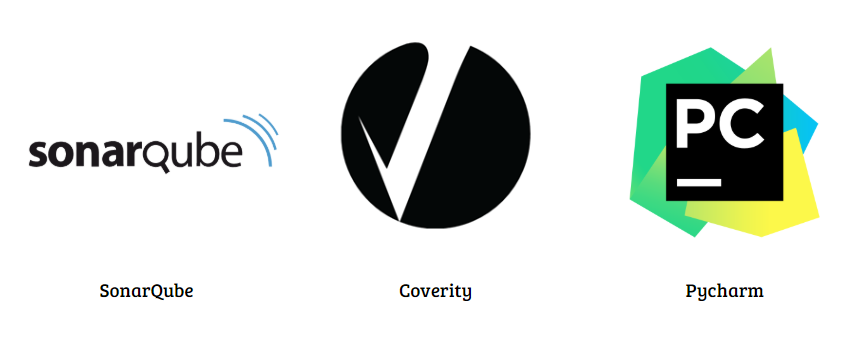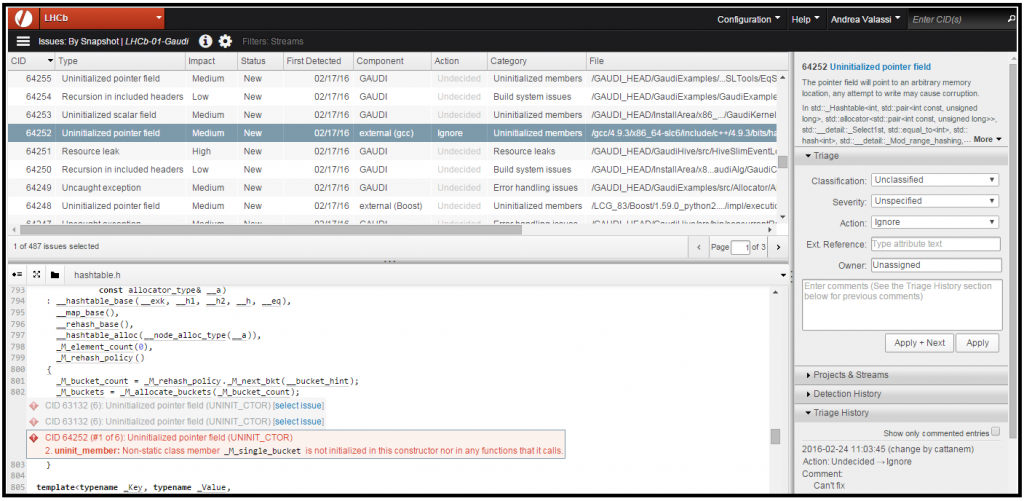
The Coverity is a fast, precise, and highly ascendable static analysis solution that helps development and security teams address security and quality defects early in the software development life cycle (SDLC),

which tracks and manage risks across the application portfolio, and ensure compliance with security and coding standards.
Interview Questions and Answers:-
1. What is Coverity?
The Coverity could be a quick, accurate, and extremely scalable static analysis (SAST) resolution that helps development and security groups address security and quality defects early within the code development life cycle (SDLC), track and manage risks across the applying portfolio, and guarantee compliance with security and secret writing standards.
2. What are the benefits of Coverity?

As a foundation for Quality adviser, Coverity SAVE showing intelligence tests code changes with a deep understanding of behavior and criticality to accurately determine laborious to identify nevertheless doubtless crash inflicting quality defects in C/C++, Java and C# codebases, as well as concurrency defects, improper use of memory and null.
3. What is the difference between Coverity and SonarQube?

The Coverity supports twenty two languages and over seventy frameworks and templates. SonarQube is that the leading tool for unceasingly inspecting Code Quality and Code Security, and guiding development groups throughout code reviews.
4. How does Coverity Scan work?

Coverity may be a static analysis tool. The place to begin with Coverity is what we have a tendency to decision central analysis. sporadically, an automatic method can explore your code from your supply system then build and analyze it with Coverity. Those results area unit then sent to a Coverity server.
5. How do you use Coverity wizard?
- Using Coverity Wizard
- Open the “Coverity Wizard” from the shortcut on the desktop.
- You may create a new wizard, or use File>Open, go to “File System > srv > cov-wizard-files” and open any of the cwz files.
- Set the project name to the name of the module you scan or anything you prefer and click next.
6. Does Coverity do code coverage?
Coverity SAVE also provides full path coverage, ensuring that every line of code and every potential execution path are tested. Coverity SAVE utilizes multiple patented techniques to ensure deep, accurate analysis.
7. Who uses Coverity?
In June 2008, Coverity acquired Solidware Technologies. In February 2014, Coverity announced an agreement to be acquired by Synopsys, an electronic design automation company, for $350 million net of cash on hand.
8. What is stream Coverity?
Coverity uses what are called, Projects and Streams, which allows you to set up your code in Coverity in a way that is similar to how you already organize your code in your development environments.
9. What is Coverity connect?
Coverity Connect is the Web-based platform for Coverity, a brand of software development products from Synopsys, consisting primarily of static code analysis and dynamic code analysis tools. Nginx is a Web server which can also be used as a reverse proxy, load balancer and HTTP cache.
10. How do you run Coverity?
- How to run Coverity Analysis
- Add Coverity Analysis to your path.
- Configuring a compiler.
- Capturing a build.
- Analyze.
- Committing your report.
- (Optional) Generating an authentication key.
11. What are coverity warnings?
Some examples of defects and vulnerabilities found by Coverity Quality Advisor include:
- resources leaks.
- dereferences of NULL pointers.
- incorrect usage of APIs.
- use of uninitialized data.
- memory corruptions.
- buffer overruns.
- control flow issues.
- error handling issues.
12. Does coverity support Golang?
Coverity only supports projects that are built with the following commands: go build, go install, go run, and go test.
13. Does coverity support Perl?
Synopsys is proud to serve the open source community, with more than 4,000 projects currently using our free Coverity Scan, including Linux, Python, PostgreSQL, Firefox, OpenSSL, Perl, Apache Hadoop, and many more. With Coverity Policy Manager, users can easily monitor and report on statuses, risks, and trends.
14. What is the latest version of Coverity?
Coverity 2021.01 is a special release for Polaris. When consulting Coverity documentation, use the guides for Coverity 2020.12. Note: Install the latest version of Polaris Scan Client (1.12.)
15. Does coverity support Kotlin?
Coverity only supports Kotlin projects that are targeted to JVM or Android, not other platforms. For multi-platform projects, Coverity only captures Kotlin source files that are targeted to the supported platforms.
16. How do you run Coverity locally?
Coverity Analysis must be accessible through your local file system. Either install it locally, or use an nfs mount to access as a local directory. Then, you can either configure access directly in Eclipse in the General -> Analysis Tools section, or you can specify the Coverity Analysis location in a coverity.
17. How do you create a project Coverity?
To create a new stream just navigate your browser to Coverity connect and create one. Make sure you actually have permissions to add streams to your project. In coverity connect you have one option like configuration in right most top corner.In that you can find Projects and stream which already created.
18. How do I create a Coverity snapshot?
From the home page in Coverity connect, one can manually click on ‘All snapshots in project’ from the menu and then click on snapshot to see all defects.
19. How do I run Coverity in Linux?
Coverity Scan Setup:-
- cd to your build directory.
- optional: Run any build steps that you don’t want to analyze – i.e. ./configure.
- cov-build –dir cov-int [BUILD CMD and ARGS]
20. What is CCM in Coverity?
cccmt is used to parse the METRICS. errors. xml generated by cov-analyze of Coverity to produce a Code Complexity Metrics (CCM) report of different functions.
21. What is false positive Coverity?
Andy Chou, Coverity Inc., andy@coverity.com. All source code analyzers generate false positives, or issues which are reported but are not really defects. False positives accumulate over time because developers fix real defects but tend to leave false positives in the source code.
22. How do I change my Coverity license?
How to change the version of your license [Coverity]
- Go to the Licenses Tab.
- Click the License you wish to upgrade. ( …
- Click the ‘Change License Version’ Button.
- Click the ‘Available Versions’ dropdown and select the version you wish to change to.
- When you’re done, click ‘Submit’
23. How do you solve Coverity issues?
To see Coverity issues you have to be a member of the GlusterFS project in Coverity scan website. Go to above link and subscribe to GlusterFS project (as contributor). It will send a request to Admin for including you in the Project.
24. How do I uninstall Coverity?
The easiest way to delete an unwanted Coverity compiler configuration is: Go to your Coverity Analysis Installation Directory > bin folder… From your Coverity Analysis Installation Directory > config folder… Click OK and voila!
25. How do I export a Coverity report to Excel?
For those who came here looking to export CSV using the web interface to the Coverity server, if you open the menu sidebar, then in the “Issues by …” and “File” sections, each subsection has a drop-down option “Export CSV” which does the job !
26. How do you mark a false positive in Coverity?
- Mark Coverity defect as false positive
- Go to “Triage” section on the right panel of “View Defects” page.
- Set “Action” to “Ignore” and “Apply”.
27. What are false positive rules?
A false positive is an issue that doesn’t actually exist in the code. It doesn’t need to be fixed. This happens when no rule violation exists, but a diagnostic is generated.
28. What languages does Coverity support?
Coverity supports over 70 different frameworks for Java, JavaScript, C#, and other languages. Coverity also supports security modeling of major cloud provider API frameworks for cloud-native JavaScript apps that interact with AWS services (EC2, S3, DynamoDB, IAM) and Google Cloud Storage APIs (GCP).
29. What ports does Coverity use?
How to Find or Change Port Assignments in Coverity Connect:-
- HTTP port: The default is 8080. The current configuration is in $CIM_HOME/server/coverity-tomcat/conf/server.
- Database port: The default is 5432.
- Commit port: The default is 9090.
- Control port: The default is 8005.
30. How do I run a Coverity Scan?
- Add Coverity Scan plugin to your build process.
- Register your project with Coverity Scan to get the Project token.
- Enter the “Project token” and notification email in Coverity Scan plugin.
31. How good is coverity?
The Coverity is ranked no.10 solution in application security tools. PeerSpot users give Coverity an average rating of 8 out of 10. The Coverity finds critical software quality defects and security vulnerabilities in code as it’s written, early in the development process, when it’s least costly and easiest to fix.
32. Is Coverity Scan free?
Coverity Scan is a free static-analysis cloud-based service for the open source community.
33. What is stream coverity?
Coverity uses what are called, Projects and Streams, which allows you to set up your code in Coverity in a way that is similar to how you already organize your code in your development environments.
34. Does coverity support Kotlin?
Coverity only supports Kotlin projects that are targeted to JVM or Android, not other platforms. For multi-platform projects, Coverity only captures Kotlin source files that are targeted to the supported platforms.
35. What are SAST tools?
Source code analysis tools, also known as Static Application Security Testing (SAST) Tools, can help analyze source code or compiled versions of code to help find security flaws. SAST tools can be added into your IDE. Such tools can help you detect issues during software development.
36. What is the full form of SAST?
Static application security testing (SAST) is a set of technologies designed to analyze application source code, byte code and binaries for coding and design conditions that are indicative of security vulnerabilities.
37. What is Coverity Quality Advisor?
Coverity Quality Advisor surfaces quality defects right in the developer’s workflow with accuracy and actionable remediation guidance. Intelligent Code Analysis. The Coverity Static Analysis Verification Engine™ (Coverity SAVE™) is the analysis foundation for the Coverity Development Testing Platform.
38. How do you solve Coverity issues?
To see Coverity issues you have to be a member of the GlusterFS project in Coverity scan website. Go to above link and subscribe to GlusterFS project (as contributor). It will send a request to Admin for including you in the Project.
39. Why do we need SAST?
SAST helps ensure that the software uses a strong and secure code. It helps developers verify that their code is in compliance with secure coding standards (for e.g. CERT) and guidelines before they release the underlying code in the production environment.
40. What is Coverity Build?
Coverity is a static analysis tool. The starting point with Coverity is what we call central analysis. Periodically, an automated process will check out your code from your source control system and then build and analyze it with Coverity. Those results are then sent to a Coverity server.
41. Does coverity do code coverage?
Coverity SAVE also provides full path coverage, ensuring that every line of code and every potential execution path are tested. Coverity SAVE utilizes multiple patented techniques to ensure deep, accurate analysis.
42. What is SAST vs SCA?
SAST tools focus specifically on analyzing source files. That means that they scan a product’s source code. In contrast, an SCA tool discovers all software components including their supporting libraries as well as all direct and indirect dependencies.
43. Which type of tools perform static analysis of code?
- Raxis.
- SonarQube.
- PVS-Studio.
- DeepSource.
- Embold.
- SmartBear Collaborator.
- CodeScene Behavioral Code Analysis.
- reshift.
44. Does coverity support typescript?
Yes, coverity support typescript. The Supported hardware and languages for Coverity on Polaris. Supported SCM.
45. What is the difference between veracode and SonarQube?
SonarQube and Veracode are application security and code quality management options. SonarQube provides a free and open source community edition and focuses on static code analysis, while Veracode provides SAST, but also DAST, IAST, and penetration testing, as well as application security consulting.
46. What is the frequency for build submissions to Coverity Scan?
The number of weekly builds per project are as follows:
- Up to 28 builds per week, with a maximum of 4 builds per day, for projects with fewer than 100K lines of code
- Up to 21 builds per week, with a maximum of 3 builds per day, for projects with 100K to 500K lines of code
- Up to 14 builds per week, with a maximum of 2 build per day, for projects with 500K to 1 million lines of code
- Up to 7 builds per week, with a maximum of 1 build per day, for projects with more than 1 million lines of code
- Once a project reaches the maximum builds per week, additional build requests will be rejected. You will be able to re-submit the build request the following week.
47. Does Coverity Scan work with Eclipse Foundation projects?
Registered Projects, which are also part of Eclipse Foundation, can participate in the Coverity Scan service by using the Coverity Scan plugin on the Hudson server. This plugin sends build and source code management information to Coverity Scan server. Coverity Scan server builds and analyzes the code in the cloud for Registered Projects which are part of Eclipse Foundation, and makes results available online.
48. Why is Synopsys providing the Scan service?
Coverity Scan began in collaboration with Stanford University with the launch of Scan occurring on March 6, 2006. During the first year of operation, over 6,000 software defects were fixed across 50 C and C++ projects by open source developers using the analysis results from the Coverity Scan service.
49. What do I do if my build upload responds with “Peer’s certificate issuer has been marked as not trusted by the user”?
curl performs SSL certificate verification by default, using a “bundle” of Certificate Authority (CA) public keys (CA certs). If the default bundle file isn’t adequate, you can specify an alternate file using the –cacert option. If this HTTPS server uses a certificate signed by a CA represented in the bundle, the certificate verification probably failed due to a problem with the certificate (it might be expired, or the name might not match the domain name in the URL). If you’d like to turn off curl’s verification of the certificate, use the -k (or –insecure) option.
50. If your project is already registered in Scan, how do I get an account?
If your project is already a Registered Project in Scan, but you are not yet a registered user of Scan, you can register with Scan, and upon registration, you can click on Add Project, find your Registered Project in the project table, and request access to the Registered Project of your choice. You will be granted access subject to approval by the Registered Project owner or Scan administrator.
Here is the video link:-
- Mastering Qualitative Research: The Role of Focus Groups in Data Collection - July 11, 2024
- What is robots ops? - July 10, 2024
- 5 Effective Online Learning Strategies for DevOps Professionals - July 4, 2024

